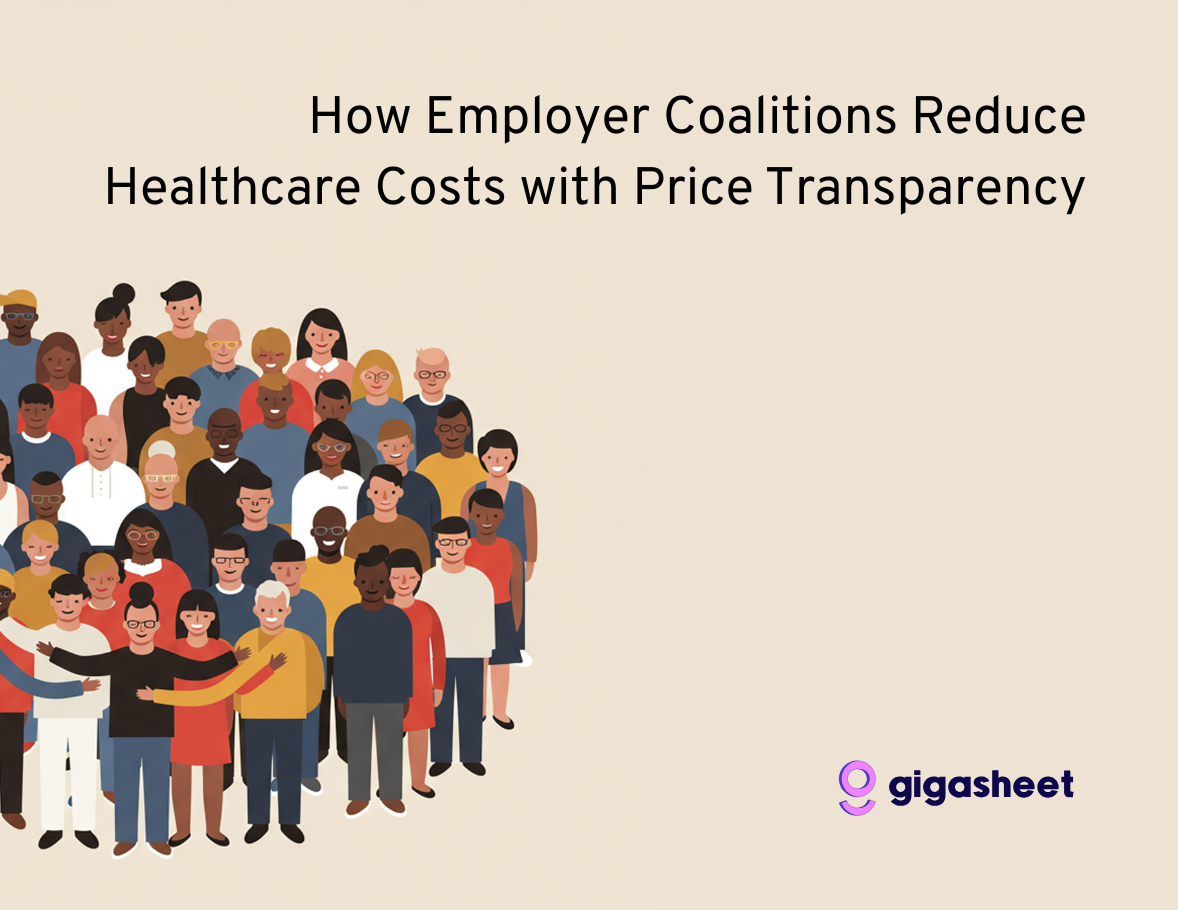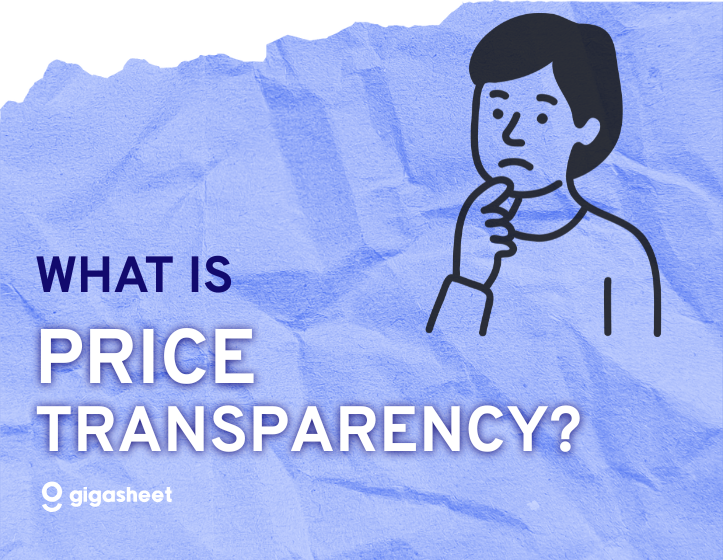Price Transparency
How Employer Coalitions Reduce Healthcare Costs with Price Transparency

Employer-sponsored health plans continue to face rising costs, opaque pricing, and limited data access. To combat this employer coalitions or purchaser assocations are harnessing price transparency data to negotiate better contracts, design high-value networks, and hold payers accountable. We'll look at how groups of self-insured organizations that collectively represent employers are applying price transparency data.
The Rise of Employer Coalitions and Collective Purchasing Power
Employer coalitions bring together self-insured employers to increase volume, influence and data visibility. This scale gives coalitions a stronger voice in market negotiations, joint contracting strategies, and demand for richer analytics. When an individual employer tries alone, they often lack the data scale, benchmarking context or negotiating leverage. Within a coalition, the aggregated footprint brings credibility to payer and provider dialogues.
Coalitions thus become a vehicle for employer groups to act beyond their single-employer boundaries to aggregate data, share insights, and access third-party analytics capabilities they could not deploy alone.
Why Price Transparency Data Is a Game Changer for Employers
Historically, self-insured employers have operated with limited visibility into what hospitals, healthcare systems, and insurers actually charge. The introduction of price transparency mandates such as the Transparency in Coverage (TiC) rules and machine-readable files (MRFs) has changed that dynamic.
With transparency data, employers and coalitions can now see negotiated rates across payers and providers in their markets. They gain access to benchmark price information even when they do not yet have full internal claims data. This shift empowers employers in several ways:
- They can compare provider pricing across markets and identify lower-cost, high-quality providers.
- They can bring objective, data-driven questions into contracting discussions.
- They can design networks, tiering structures, and direct-contracting models based on real-world pricing insights.
Transparency data alone is not a complete solution, but it provides employers with a strong foundation for smarter cost management.
Turning Data into Action: How Coalitions Cut Costs
Building Narrow and High-Performance Networks
One of the key use cases for transparency data is in constructing narrow or high-performance networks. Employers are using the data to identify hospitals and facilities whose negotiated prices are “more reasonable compared to others in their area.” With that data, they can approach hospitals and say: “We’d like to include you in our high-performance network because your unit costs align with our benchmarks.” This move helps shift provider behavior, improves value, and strengthens employer leverage.
Implementing Tiered Networks Based on Cost Benchmarks
Another pragmatic tactic is deploying tiered networks. Instead of requiring employees to stay in a narrow network only, employers may set thresholds—such as limiting inclusion to providers with pricing at or below “200% of Medicare.” Those providers become in-network at standard cost share, while higher-priced providers remain but with elevated cost sharing for the employee. This allows employers to steer utilization toward lower-cost providers while preserving access. Transparent pricing data makes the cost differentials objective and credible.
Direct Contracting with Providers
Transparency also enables more radical contracting models: direct contracts between employers (or employer coalitions) and providers. By removing the insurer or third-party intermediary (“the middleman”), employers streamline payment, reduce administrative layers, and negotiate more favourable terms. In one instance, providers were willing to accept lower payment amounts than through insurers because they gain speed, simplified processes and predictability. Price transparency reveals where those opportunities exist, and coalitions with aggregated covered lives have the credibility to engage.
Overcoming Data and Access Challenges
Data Quality and Completeness Issues
While price transparency has made a big leap, challenges remain. The data is still evolving; errors, missing fields, inconsistent formats and irregular updates continue to frustrate employer efforts. The analytics demands (volume, normalization, benchmarking) often exceed the capabilities of individual employers, hence the role of third-party analytics partners. Even the most sophisticated employers usually cannot crunch these numbers on their own, due to the heavy resource investment in data-cleansing, analytics platforms and governance of the underlying datasets.
The Battle for Access to Employers’ Own Claims Data
Perhaps the most ironic barrier: many employers can see aggregate rate data for providers in their markets via transparency files, but struggle to access their own detailed claims data from carriers. While the employer believes they are legally entitled to the raw payment and unit cost data under ERISA and the Consolidated Appropriations Act, carriers sometimes resist.
The result: employers may know what “others” pay but not be able to validate what they pay (or identify payment errors, outlier claims or policy-design inefficiencies). For example: an employer may see a typical colonoscopy claim at ~$1,500, then a claim at ~$5,000 and the carrier says “we can’t tell you the breakdown.”
Worth noting that coalitions are pushing for federal legislation to clarify employer rights to claims data is gaining traction, but until then, associations must include data-access grants in carrier negotiations.
The Limits of Transparency in Consolidated Markets
It's important to recognize that price transparency is necessary but not sufficient in markets affected by consolidation and anti-competitive contracting practices. In many U.S. metropolitan areas, hospital systems dominate the market, providers use all-or-nothing or anti-tiering and anti-steering clauses, and insurers have limited leverage. Even when a lower-cost hospital is identified, employers may still be unable to contract with them because of restrictive agreements with higher-priced systems. In these environments, transparency data can guide strategy, but competitive dynamics often limit what can be achieved. Employer coalitions need to combine transparency analytics with policy advocacy, strategic planning, and the development of alternative network options wherever possible.
How Advanced Analytics Platforms Help Employers Leverage Transparency Data
Accessing transparency data is just the start—turning it into actionable insights requires analytics platforms tailored to employer and coalition use cases. Analytics tools allow the cleaning of zombie rates (non-viable outlier values), statistical correlation cleaning, and linking of row-level MRF details for full data lineage.
For example, a platform can layer in employer localisations, ZIP-code-based benchmarking, provider affiliation links, and contact-intelligence for provider outreach. Coalitions then use the output to build provider recruitment campaigns, network design proposals, or contracting targeting.
The combination of transparency data + analytics creates operational scale for employer coalitions—enabling them to act like a payer-equivalent in terms of data-driven negotiation.
The Road Ahead for Employer Coalitions
Looking forward, employer coalitions that succeed will do three things:
- Continue building out claims-data access and internal benchmarking so they don’t rely solely on external rate comparisons.
- Enhance transparency of provider negotiation pathways. This includes direct-contract models, tiering and narrow networks. This allows them to move from insight to implementation.
- Engage proactively in the policy domain to reduce barriers like anti-competitive provider contracting, limited carrier transparency, and incomplete data disclosure.
The future of employer-led healthcare cost control is data-driven and coalition-powered. Transparency data is the foundation, but the combination of data, analytics, network design and execution is the differential.
Key Takeaways
- Employer coalitions with aggregated covered lives (e.g., ~45 million) provide scale and influence for cost-management strategies.
- Price transparency data enables benchmarking of provider pricing, foundation for narrow/tiered networks, and direct confrontation of provider-cost variation.
- Major levers: narrow/high-performance networks, tiered networks, and direct contracting with providers.
- Barriers remain: data quality, incomplete claims-access, and structural market limitations (provider consolidation, anti-steering contracts).
- Analytics platforms tailored to employer coalitions are essential to turn raw transparency data into actionable intelligence and operational execution.
Learn how Gigasheet helps self-funded employer associations and benefits partners. Book your 1-1 demo today.
The ease of a spreadsheet. The power of price transparency.



















